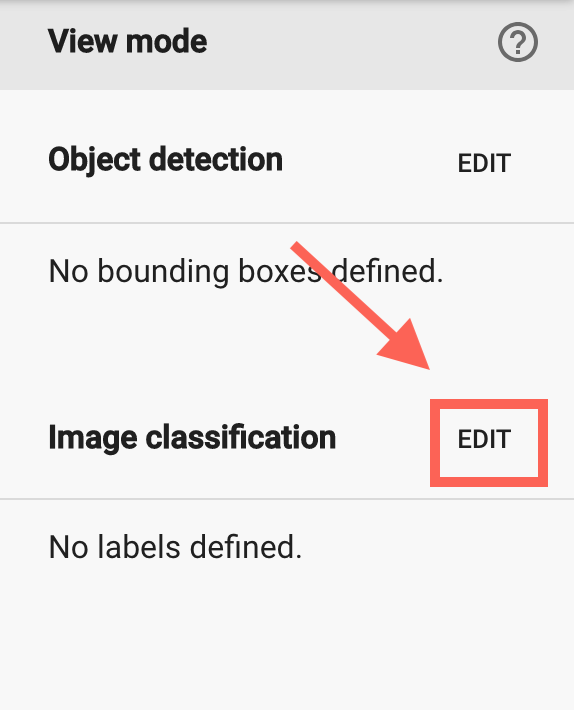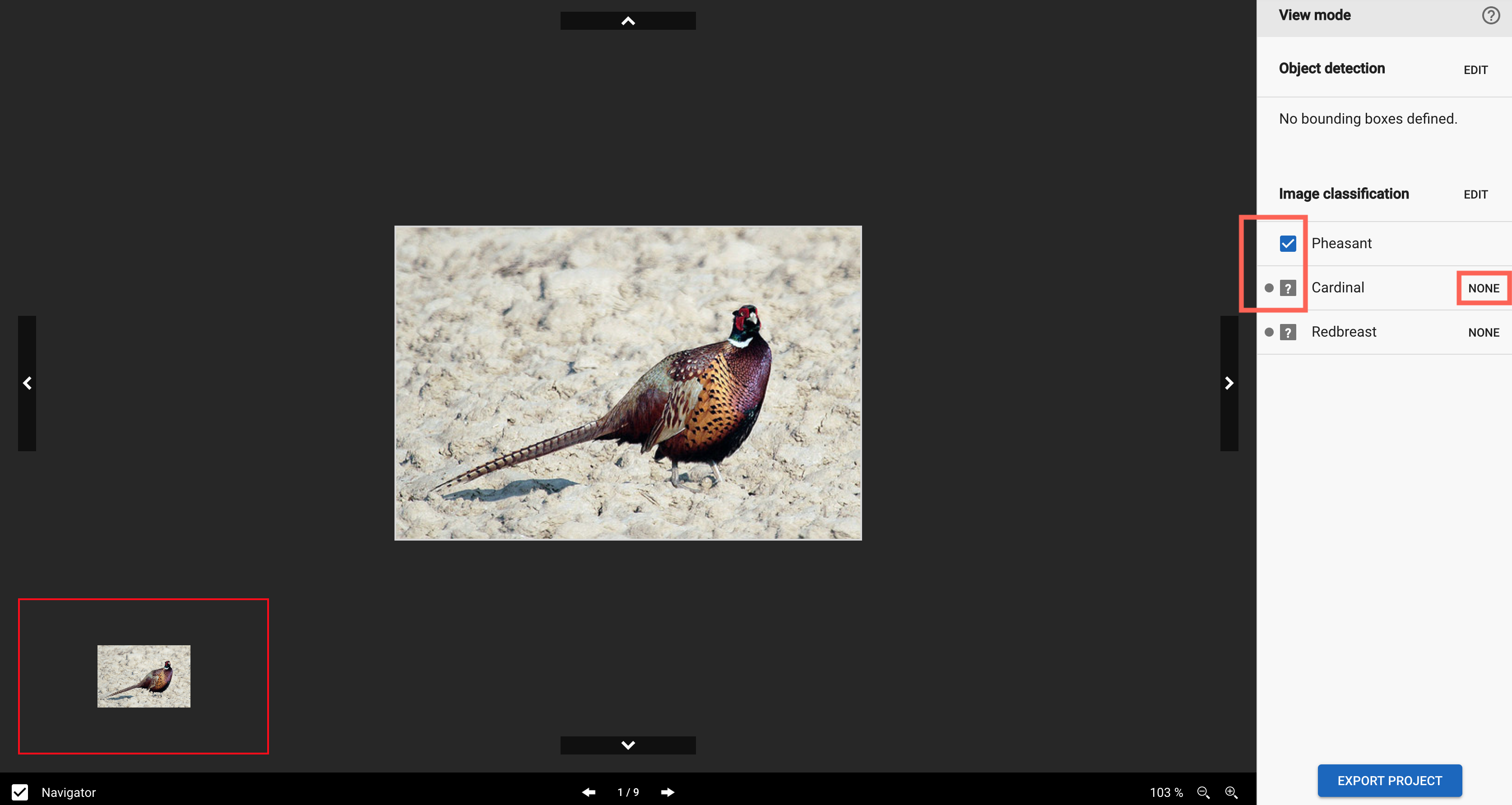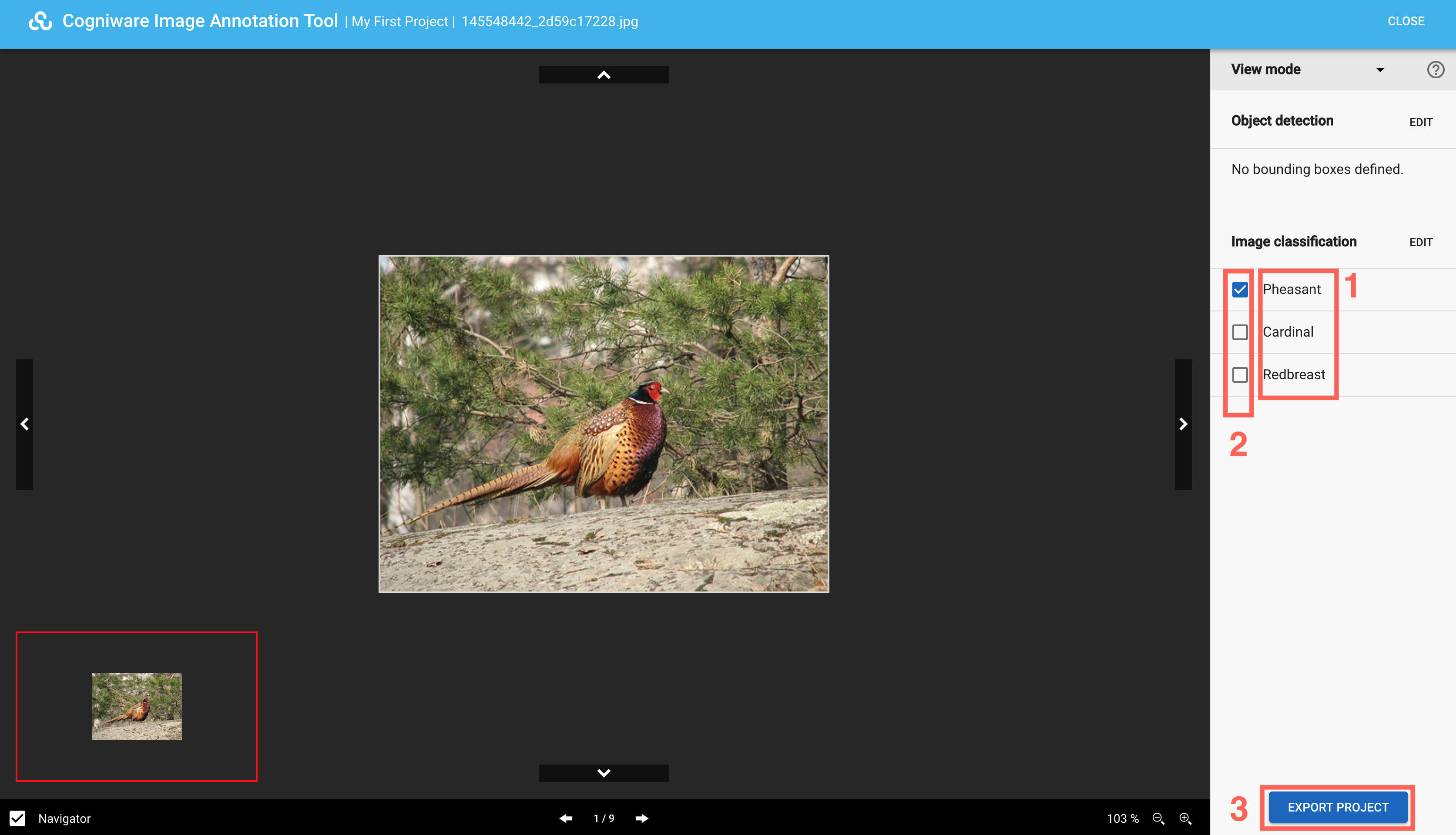Image classification
Reading time: 5 minutes.
This article explain working with image classification in annotation tool.
Annotation tool set
It is set to View mode. If you want to use shortcuts click on Question mark icon next to mode selection.
 Adding class
Adding class
To start work with classes click on EDIT next to “Image classification”.

Class manager window pop up. Fill up name of the object and then click on ADD. With edit icon on the right side of the name you can rename object or by clicking on trash icon delete it.

Starting with classification process
When all classes are added, you can start with image classification. Status of each class is represented by question mark (?) and NONE next to them. If you want to assign picture to one of the classes, click on appropriate class. Class is now marked by a thick. If object does not belong to certain class, click on NONE.

Example:
In this example you can see that there are 3 classes (1). Bird in this picture is correctly in Pheasant class and not in Cardinal or Redbreast class (2). When you finish with object detection, click on EXPORT PROJECT (3). This will download JSON file with all images from your project as ZIP file to your computer

JSON file
JSON file structure is based on COCO structure (Common objects in context). It contains the following objects:
| Fields | Description | Attributes |
|---|---|---|
info | Main information about project | year |
| version | ||
| description | ||
| contributor | ||
| url | ||
| date_created | ||
images | Information about all images contained in project | id |
| width | ||
| height | ||
| file_name | ||
| license | ||
| flickr_url | ||
| coco_url | ||
| date_captured | ||
annotations | Annotation data of each image, its classification, coordinates of detected objects | id |
| image_id | ||
| category_id | ||
| segmentation | ||
| area | ||
| bbox | ||
categories | Name and id of each class | id |
| name | ||
| supercategory |
Get me there: